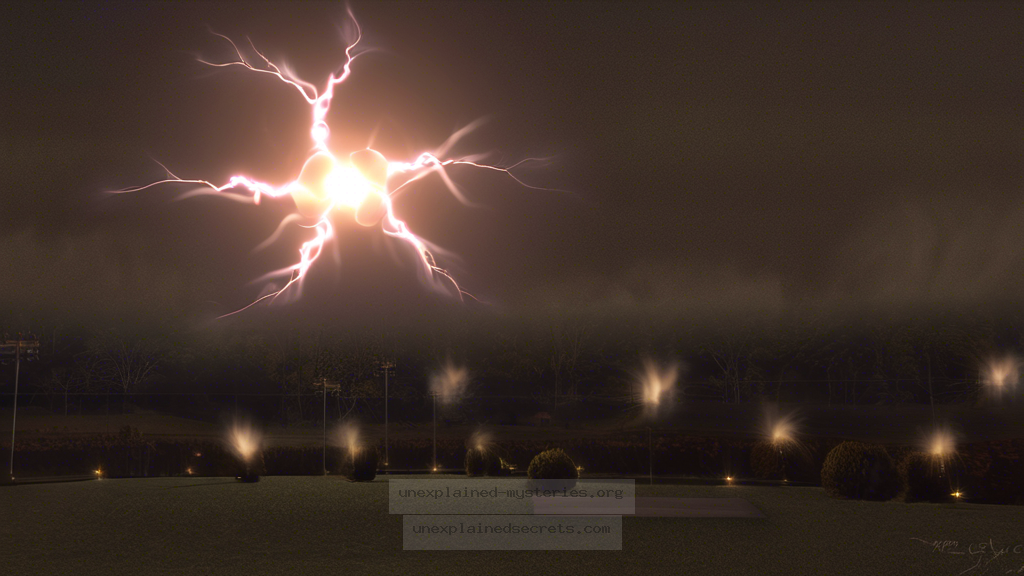What Causes the Mysterious Phenomenon of Ball Lightning?
What Causes the Mysterious Phenomenon of Ball Lightning?
Ball lightning is one of the most enigmatic phenomena in the realm of atmospheric science, exhibiting characteristics that seem to defy our current understanding of physics. Reports of glowing, spherical objects floating in the air during thunderstorms have puzzled scientists for centuries. Despite numerous theories and anecdotal evidence, the exact nature and cause of ball lightning remain elusive, leading researchers to explore various scientific avenues in search of answers. Understanding ball lightning is not merely an academic exercise; it has implications for atmospheric science, safety during thunderstorms, and the fundamental laws of nature. This article delves into the mystery of ball lightning, presenting historical accounts, scientific theories, and ongoing research efforts.
Historical Context of Ball Lightning
The first recorded observations of ball lightning date back to at least the 16th century. Notably, in 1638, the English scientist Francis Glanvill documented an encounter in which a glowing sphere entered his home, illuminating the room before disappearing. Throughout history, many cultures have attributed spiritual or supernatural meanings to this phenomenon. The term “ball lightning” itself has been used since the 19th century, but the lack of empirical evidence has hindered scientific inquiry.
In the 20th century, advances in technology led to more systematic studies of ball lightning, yet it remained a fringe topic until the advent of high-speed photography and more sophisticated atmospheric measurement tools. Despite these advancements, many documented cases continue to lack scientific validation, as ball lightning is notoriously unpredictable and difficult to replicate in laboratory settings.
The Nature of Ball Lightning
Ball lightning is typically described as a luminous sphere ranging from the size of a pea to several feet in diameter. It can appear in various colors, including white, yellow, and red, and often moves erratically through the air. Some witnesses report that it can pass through solid objects, such as windows, and may even explode or vanish suddenly.
Scientists have proposed several theories to explain the phenomenon, including plasma formation, chemical reactions, and the behavior of electrical charges. However, none of these theories have been universally accepted, and many researchers argue that ball lightning could be a combination of different processes rather than a single entity.
The unpredictability and transient nature of ball lightning complicate efforts to study it in a controlled environment, which has led to a wide range of hypotheses, some more plausible than others.
Theories Explaining Ball Lightning
Several theories have emerged to explain the occurrence of ball lightning, and each comes with its own strengths and weaknesses. Below are some of the most prominent theories:
- Plasma Theory: One of the most widely accepted theories suggests that ball lightning is a form of plasma, a state of matter consisting of charged particles. This theory posits that during thunderstorms, the intense electric fields create a localized plasma that can manifest as a glowing ball.
- Chemical Reaction Theory: Some scientists propose that ball lightning results from chemical reactions, particularly involving silicon and other elements found in soil. This theory suggests that these reactions could produce a high-energy state that manifests as light.
- Microwave Cavity Theory: This theory suggests that ball lightning could be a form of electromagnetic radiation trapped in a “cavity” created by the surrounding atmosphere, similar to how microwave ovens work.
- Quantum Vortex Theory: A more recent and controversial hypothesis posits that ball lightning is a quantum vortex, a phenomenon that occurs at the quantum level, resulting in stable, localized energy formations.
Practical Implications of Ball Lightning
The study of ball lightning has significant implications for our understanding of atmospheric phenomena and safety during thunderstorms. For instance, if ball lightning is indeed a form of plasma, this could lead to advances in plasma physics and technology, including energy storage and transmission. Furthermore, understanding the behavior of ball lightning could enhance safety protocols during thunderstorms, particularly for aviation and electrical infrastructure.
The unpredictability of ball lightning poses risks, as it can cause fires or electrical surges when it makes contact with flammable materials or electrical systems. Knowledge of how to identify and respond to ball lightning could save lives and prevent property damage.
In addition, the study of ball lightning can serve as a gateway to exploring other unexplained phenomena in atmospheric science, potentially leading to breakthroughs in our understanding of the Earth’s atmosphere.
Real-World Examples and Documented Cases
Several documented cases of ball lightning provide insight into its characteristics and effects. One notable incident occurred in 1970 in the Soviet Union, where a group of scientists observed a ball of light moving through their laboratory during a thunderstorm. The ball reportedly changed color and size before vanishing, leaving behind a faint odor of sulfur.
Another case, reported in 1984 in the United States, involved a farmer who witnessed a ball of light entering his barn. The sphere reportedly hovered for several seconds before exploding, causing significant damage to the structure.
These anecdotes, while compelling, often lack rigorous scientific documentation. Nonetheless, they contribute to the body of evidence suggesting that ball lightning is a genuine phenomenon worthy of further investigation.
Alternative Perspectives: Skepticism and Criticism
Despite the growing body of anecdotal evidence, skepticism remains regarding the existence of ball lightning. Some critics argue that many reported incidents can be attributed to misinterpretations of other phenomena, such as St. Elmo’s fire or even hallucinations.
Moreover, the lack of reproducibility in laboratory settings raises questions about whether ball lightning is a legitimate phenomenon or merely a collection of unrelated events misclassified under a single term. Skeptics emphasize the importance of empirical evidence and call for more rigorous scientific methods to study these occurrences.
The debate highlights the challenges scientists face in bridging the gap between anecdotal evidence and empirical validation, underscoring the need for open-minded yet critical inquiry into unexplained phenomena.
Common Misconceptions About Ball Lightning
Several misconceptions about ball lightning persist in popular culture and scientific discourse.
- Myth: Ball lightning is always dangerous. While ball lightning can cause damage, not all encounters are harmful. Many witnesses report observing ball lightning without any adverse effects.
- Myth: Ball lightning is a myth. While skepticism is healthy, dismissing all accounts as fabrications undermines the need for scientific inquiry into unexplained phenomena.
- Myth: Ball lightning only occurs during thunderstorms. While most reports are associated with storms, there have been instances of ball lightning occurring in clear weather, suggesting a more complex relationship with atmospheric conditions.
Best Practices for Investigating Ball Lightning
Given the challenges associated with studying ball lightning, researchers and enthusiasts should consider several best practices when investigating this phenomenon:
- Document Observations: Always record the time, location, and environmental conditions during an encounter. Photographic evidence can be invaluable.
- Collaborate with Experts: Work with atmospheric scientists and physicists to analyze data and develop hypotheses that can be tested scientifically.
- Utilize Technology: Employ high-speed cameras and atmospheric sensors to capture events as they occur, potentially allowing for real-time analysis.
- Engage with the Community: Share findings in scientific forums and engage with other researchers to broaden the understanding of ball lightning.
Future Developments and Ongoing Research
Research into ball lightning is gaining momentum, with several studies currently underway to explore its characteristics and underlying mechanisms. Advances in technology, including improved atmospheric sensing and data analysis tools, are enabling researchers to gather more accurate and comprehensive data.
Some scientists are experimenting with creating artificial ball lightning in the laboratory to study its properties under controlled conditions. These experiments could shed light on the nature of ball lightning and help validate or disprove existing theories.
As interest in unexplained phenomena grows, collaborative efforts across disciplines—ranging from physics to meteorology—are vital. The quest to understand ball lightning could ultimately lead to broader insights into atmospheric science and the fundamental workings of our universe.
Key Takeaway: Ball lightning remains one of the most intriguing mysteries in atmospheric science. Continued research and open-minded inquiry are essential to uncover the truths behind this phenomenon.
Conclusion
The mystery of ball lightning captivates scientists and enthusiasts alike, serving as a reminder of the unexplained complexities of the natural world. While historical accounts and anecdotal evidence provide a glimpse into this phenomenon, much work remains to be done to understand its nature fully. Theories range from plasma formations to quantum vortices, each offering valuable insights but no definitive answers.
As researchers continue to investigate ball lightning, the potential implications for atmospheric science, safety, and our understanding of physical laws are profound. By fostering collaboration and employing rigorous scientific methods, the quest for answers may one day illuminate this enigmatic phenomenon. Ultimately, ball lightning embodies the spirit of inquiry that drives scientific discovery—an enduring puzzle waiting to be solved.
Other Articles
Recent Posts
- What Happened to Flight MH370? The Conspiracy Theories That Still Haunt Us
- What Secrets Lurk Within the Walls of the Infamous Trans-Allegheny Lunatic Asylum?
- What Evidence Supports the Existence of Bigfoot in the Pacific Northwest?
- What Happened to the Indus Valley Civilization? Unraveling the Mysteries of Ancient Urban Life
- Can Telepathy Be Scientifically Proven Through Laboratory Evidence?







